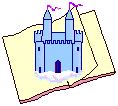|
|
China - History and Geography

China from space Ancient China was built
along the two main rivers—first the Yellow River (Huang He) in the north, and later the Yangtze in the south. In the settlements along the Yellow
River, people grew millet in the rich, easily worked loess soil. In the
south, people grew rice along the Yangtze river, ate a good deal of fish,
together with vegetables, especially water plants such as water chestnuts and
lotus. Along with dogs, pigs and cattle, people in the south had water
buffalos to help work the soil. By the heavy use of human labor, the
same area of land in the south could grow about twice as much food as in
the north.

All Under Heaven
The seasonal monsoon winds that blow north from the Indian Ocean over
Asia produce vast amounts of rainfall in the Himalayan Mountains and the
Tibetan Plateau. Some of this water, along with rich sediments,
flows across the Chinese Plain creating fertile farmland. The fertile areas of Eastern China are surrounded by
deserts, vast steppes, high mountains and impassable jungles. Because of this
the early civilization of China developed more independently than those
of the Indus, Tigris and Euphrates, and Nile River valleys, which were
always in contact with each other. This gave rise to a feeling in
China was the world, that it was "All Under Heaven", surrounded by
lesser regions populated by barbarians.
Xia Dynasty and before
The Xia dynasty was
recorded in traditional Chinese histories as the oldest of the ancient dynasties.
The existence of this dynasty has been disputed, though some archeological
evidence for it has been discovered.
From the sometimes elaborate burials, one can tell that
there was already major social stratification—some people were buried with
hundreds of grave goods--pots, pieces of jade, etc,. others with nothing.
There were distinct styles in pottery and jade in different areas,
some of which reached high levels of sophistication, especially the thin-walled
pottery with an almost metallic luster.
At the beginning of the Shang Dynasty, the Chinese already
had hemp, silk, sophisticated pottery and pictographs on the oracle bones.
It is unclear if these pictographs were a complete written language, capable
of narrative, or if these pictographs represented only names, abstract ideas
and objects. In either case, they evolved into the modern written Chinese
language.
Shang Dynasty and Western Zhou ----771 BC
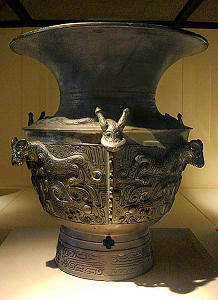
Shang Bronze The Shang Dynasty had
a complete written language, so there is a written record of their accomplishments. Bronze vases from
the Shang, made with sophisticated casting techniques, are large enough
to hold a man, and are exquisitely decorated with Chinese characters, plants
and animals. The molds were made in pieces, then joined together. They are
breathtaking to look at, even if one has no idea how ancient they are.

Ancient Chinese characters on an "Oracle Shell" used to tell fortunes
Soothsayers in the Shang dynasty held a heated piece of metal against
a turtle shell or shoulder blades of cattle to make cracks, which were then
“read” as a positive, negative or neutral response to the question which
had been posed. From the inscriptions on these oracle bones, we know
that the king “communicated” with his ancestors, asking for success in ventures,
good harvests, etc. The King was considered especially effective in
supplications for good fortune for the kingdom. Participating in rituals
and divinations were a major part of the king’s duties.
Family was extremely important, as one’s ancestors would
give help and guidance to dutiful descendants, and one would someday be
receiving offerings from one’s own sons and grandsons. The present
family was seen as a point in a line extending both directions: into the
past as one appealed to one’s ancestors for help and guidance and into the
future as one received the proper rituals and offerings from one’s descendents.
Accompanying the important burials were the bodies
of a hundred or more servants or slaves sacrificed, presumably to attend
to the wishes of the deceased in the afterlife. Along with the dead servants
were finely worked bronzes, pottery, jade and other grave goods. Jade
was shaped and polished by sand to form beads and jewelry, requiring many
hours of skilled and careful work. The bronze pieces speak of a society
where royalty could command labor from many workers, from miners to skilled
sculptors, and the people to feed the many artisans, to produce art works
for them. While the jade does not require hours underground hauling
up ore, it took many hours of polishing with sand or other abrasives to
shape the hard stones.
People were also sacrificed and buried under the foundations
of major building projects, to insure that the building went well. Fortunately,
this propensity for human sacrifice later declined.
A number of things associated with classical Chinese civilization
were already evident in the Shang—ancestor worship, an extremely high level
of craftsmanship, requiring both artistry and great technical skill; a highly
stratified society; the ability to requisition massive amount of labor for
military and civil projects; divination, especially that done by the ruler
himself; an economy based on peasant farming; written language with characters,
not an alphabet; silk, jade and bronze.
Eastern Zhou 770 BC - 256 BC
In 771 BC, the Zhou
king was killed, his son put on the throne, and the capital was moved, dividing
the Zhou Dynasty into the Western Zhou and the Eastern Zhou. It was
a period of unrest, with many different states contending with each other
for dominance; it was also a period of intellectual excitement and innovation.
Many aspects of Chinese culture—especially Confucianism—started in this period.
Within the Eastern Zhou Dynasty were periods known as Spring and Autumn
Period--from the title of a book, “Annals of Spring and Autumn” and the
Warring States Period.
As the many small states within China fought for dominance,
the victorious state would add the territory of the vanquished to its own
territory; it was then in a better state to attack a new neighbor, and less
likely to succumb to an attack itself. Having more territory—either
by war, or by increasing the farmed land with the state, producing more
food, and having a larger population from which to draw soldiers
became the means of survival and conquest.
Several philosophies important to Chinese thought developed
at this time:
Daoism is difficult to define,
especially since it has resisted attempts at definition. “Dao” means
“way” or “path”, although the Tao Te Ching, attributed to Laozi, says, “The
way that can be walked is not the true way.” Ritual and love of nature
are central to Daoism. As an example, certain Daoist priest were said to
be able to walk in the rain without getting wet, because they walked between
the rain drops. This story shows some of the mystical nature of Daoism,
and the emphasis on the knowledge of nature and living in harmony with it.
Confucianism – Confucius was
a scholar and would-be advisor to a ruler, who developed a model of a state--a
highly hierarchical system in which every person knew their role in society
and behaved accordingly; the ruler was under an obligation to be just and
humane, and those under him to be loyal and obedient. While Confucius
believed in promotion based on merit, only the males of the aristocracy
would have had the chance to have an education, and therefore the opportunity
to prove their merit by their writing. Certain aspects of Confucianism
are probably an extension and elaboration of ideas that go far back in Chinese
custom—the strict hierarchical relationship of people in society, the deep
respect for ancestors, including one’s living parents and grandparents,
the importance of ritual, and the division of society into the peasants
who farmed and the much smaller group of educated men who ran the court
and carried out the King’s orders. Confucius tried to emphasize the
importance of moral behavior by the ruler and the scholar-official in his
court.
Legalism is a philosophy of ruling
based on the idea that people are best controlled by fear. It promoted strict
laws and harsh punishment, and encouraged people to report the wrong-doing
of others. Legalism is based on a hierarchy and laws, in a mirror
of Confucianism without the emphasis on humane and moral behavior.
There was seen to be a hierarchy not only of humans, but
of the entire Universe. Every person and organization was in an exact
hierarchy. There were no parallel systems, no place or situation outside
the hierarchy, so there was no “loyal opposition” or legitimate opposing
point of view. Loyal ministers would sometimes try to tell the king
if they felt his policy was bad, but they could be punished or even killed
by the ruler for doing so. It was believed that the ruler himself
could lose the “Mandate of Heaven” to rule the country, by bad judgment
or carelessness, especially if he continued even after having been carefully
remonstrated with by his advisors.
Qin 221 BC – 206 BC
The Qin dynasty was
a short one. “Burn the books, bury the scholars.”
The Emperor (as he called himself, not just king) was a legalist who
burnt “all” the books.
Qin Shi Huang ordered all books except those on agriculture,
forestry, divination and medicine to be turned over to the state, and burned.
The only history books allowed to remain were those by Qin historians.
They also buried several hundred scholars, some of them alive. (Fortunately,
the government didn’t find all of the books, or all of the scholars.)
Among other sources, one scholar had hidden a number of
books in the wall of his house, which were found later. (It is not clear
if he was one of the ones who was buried.)
During the Qin dynasty, many things were standardized throughout
China, such as the width of cart wheels, making long-distance trade easier.
They seemed to like standardization in general. The Legalists believed in
complete adherence to a code of written laws, and the absolute power of
the Emperor. Qin Shi Huang also had pieces of the Great Wall
(still earthen, not the masonry structure that exists today) linked together.
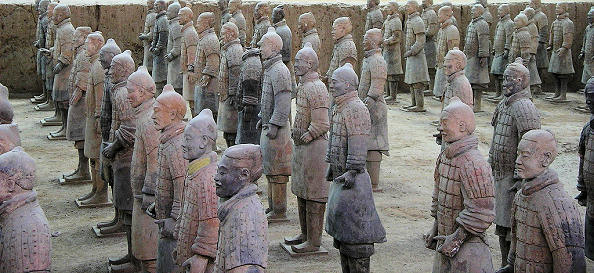
Soldiers of the "Terra Cotta Army"
The “Terracotta army”
was made for the tomb of Qin Shi Huang,
presumably to serve and guard him in the afterlife. An estimated 8,000
life-size figures of warriors, each one different, stand in rows in his
tomb. [see picture]
The Qin seemed to have been the cruelest dynasty, though
the competition was for this honor was fierce.
Han Dynasty 202 BC - 220 AD (Overlaps with Qin Dynasty)
The name of this dynasty
was taken as the name of China’s largest ethnic group, the people we most
typically think of as “Chinese”.
Emperor Wu, in a series of battles with neighboring kingdoms,
greatly increased the size of China. In 206BC, China ranged from
~500 km north of Beijing to ~Guilin in the south, from the Pacific Ocean to well past
Chongqing, including Far East Siberia
Buddhism arrived in China from India, stressing contemplation
and meditation.
There was a continuing problem with raids from the “barbarians”
to the north and west. Some “barbarian” peoples moved in from north
and assimilated into China. It is interesting that small numbers of
northern barbarians traded with, and moved into, areas of China, and then
adopted Chinese culture and way of life. Others, however, continued
to attack Chinese cities and villages, which probably contributed to the
increasing number of Han farmers moving to the south, along the Yangtze
river.
THE THREE KINGDOMS
DYNASTIES OF NORTH AND SOUTH
Sui 581-617
A short dynasty, which
did succeed in re-uniting Northern and Southern China.
The Chinese rulers required horses from the Northern tribal
groups, who wanted silk, metal objects and other goods from the Chinese.
Aristocratic Chinese families in Northern China married their children
to leading families of the Northern tribal groups to cement trade alliances
Their children and grandchildren adopted Chinese culture and language, while
the Chinese adopted stirrups and the use of trousers for riding horses
from the northern tribes. The founder of the Sui dynasty, and later many
Tang aristocrats, who were important in government, were from these part-Chinese,
part-tribal families.
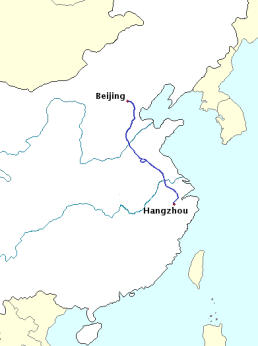
Grand Canal The Grand Canal was extended
during this time. Smaller pieces of canals, mostly linking natural
bodies of water, already existed, but work was started on a larger canal
to link Northern China and Southern China. The canal allowed food
from the south to be brought to the north.
The Grand Canal linking north and south was built
from Luoyang to (modern) Yangzhou. Later the canal was extended south
to Hangzhou and north to the Beijing area, a length of almost 1200 miles,
all accomplished only with muscle power (man and beast). The canal
meant that food from the Yangtze river area could be brought to northern
China, and the capital, and army troops could be moved where needed in a
hurry.
Tang 618-907
The Tang dynasty was in many ways an extension of the Sui
Dynasty. China was extended up into Siberia and to the West. The imperial
examination system was formalized. Young men underwent a written examination,
based on the Confucian classics, to become members of the scholar-official
class, the bureaucracy that ran China.
Taizong (reigned 626-649) killed his brothers and their
sons, then got his father to abdicate in his favor. Despite all the
family bloodshed, he became a wise ruler. As usual for the Tang, he was
a blend of Chinese and northern nomad. There was a pattern of many
of the more prosperous peoples from areas around China adopting Chinese
culture when they could.
Song (Northern Song) 960-1276
The Chinese had long used bolts of silk as unit of exchange
(the bolts of silk were not always tangible and did not always change hands;
the value of things could be expressed as being worth so many bolts of silk.)
Bronze or iron coins were used, but these were heavy and hard to carry.
During the Song, when the economy and population both grew immensely, the
Chinese started using paper money. Tea drinking also became widespread
during this time.
A group of nomadic people from the area of Manchuria successfully
attacked the capital of Kaifeng and captured the Emperor and his son.
The capital was moved to the south, in Hangzhou. This era is called
the
Southern Song to 1276
While most of the rest of the Song was spent trying to
regain the northern part of China, commerce and the art flourished during
this time.
The cruel custom of binding young girls’ feet to make them
small started during the Song. It began in the upper classes, and
eventually spread to all but the poorest peasants. Not only was the
process very painful, but it was also dangerous (from the foot becoming
infected) and left the girl barely able to walk, so that she could not do
heavy work in the fields.
Yuan (Mongol), Liao and Jin 1276-1368
The Mongols conquered
the Southern Song in 1276. Though the rulers in several of the previous
dynasties had ancestry that was part-Chinese, part-nomadic tribe,
the Yuan was the first dynasty where the Chinese themselves considered
they were being ruled by foreigners. The language of government was
Mongolian, and so were the majority of the highest officials. The Mongols
conquered the Southern Song in 1276.
Kublai Khan, grandson of Ghenghis Khan, ruled China from
1260 to 1294. His advisors included Mongols and members of many other
tribal peoples, and possibly even an Italian (Marco Polo), because Kublai
Khan did not entirely trust the Han Chinese.
Ming 1368-1644
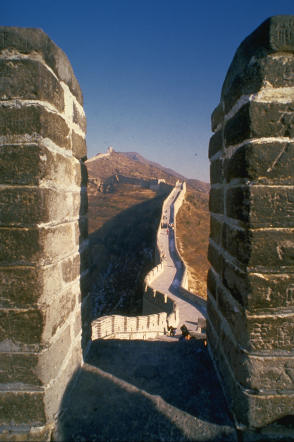
Great Wall The Mongol empire disintegrated,
and the Chinese rebelled (again), at last able to throw off the Mongols
and have a Chinese emperor, though a man of peasant origins. Taizu mistrusted
the scholar-officials, and had a huge number of them—at least 30,000--executed,
including his chief minister and everyone connected with him.
Under the Ming, the capital was moved to Beijing, and the
Forbidden City was built. The masonry Great Wall—the version we know
today-- was built during the Ming dynasty—defense of the known seems to
have suited the Ming better than exploration or progress.
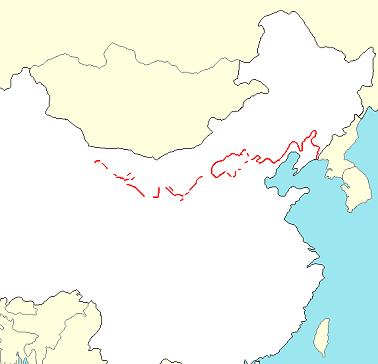
The Great Wall under the Ming Dynasty The
Ming were aware of the other civilizations in the world, to an extent previous
dynasties had not been. By being so rigid and conservative, by not
learning from the Europeans and taking the best elements of other cultures
and adapting them to China, the Ming rulers kept China from developing,
and therefore weak and defenseless.
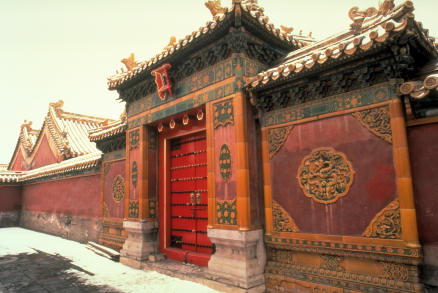
The "Forbidden City" where the emperor and his family lived
Zheng He sailed a huge fleet of ships into the Indian Ocean as far west
as Mogadishu in Africa, and possibly further. He brought back all
sorts of wonders, including zebras and giraffes. This amazing
trip failed to impress the scholar-officials at court, and was not only
never followed up, it was ignored in the histories written of the time.
Qing (Manchu) 1644-1900
After the collapse
of the Ming dynasty, the Manchus from the North conquered China. Unlike
the Mongols to the west, the Manchus were a settled people, not nomadic
tribesmen, who lived by fishing as well as farming. The Manchu
created a social structure outside the Great Wall, which helped them as
they attacked inside the Wall. Like the Mongolians, the Manchus were
considered a foreign government by the Chinese.
Men under the Manchus were forced to wear their hair in
Manchu style—the hated “pigtail”. Much of the Chinese structure of
government was kept, with the Manchus in the positions of highest power.
In trying to be “Chinese” the Qing became even more conservative.
The Neo-Confucianists made social structures became ever more rigid; they
banned fiction, plays, the re-marriage of widows—all kinds of behavior deemed
deviant. These “reforms” limited the lives of common people, especially
women. Like the rulers of the Ming dynasty, the Qing tried to isolate China
from foreign influences. China was kept in a semi-feudal state, and
was utterly unable to defend itself against modern countries
in Europe and Japan.
Under the Qing China achieved its greatest
territorial extent, including Tibet, Mongolia, Korea, Taiwan, parts of
what are now Russia and Kyrgyzstan and controlling Nepal, Southeast
Asia, Burma and the Ryukyu Islands. Military pressure from
Britain, France, Germany, Japan and Russia, an inability to grow enough
food for a greatly increased population, economic decline partially
caused by demand for opium that was introduced to China by the British,
and frequent rebellions weakened the empire. By the time of the
collapse of the Qing dynasty much territory had been permanently lost
and much of China was under foreign control.
|
More Free
Educational Software
from Owl and Mouse
Online Atlas Map of China
China and the Monsoon
Free Maps for Classroom Use
China Provinces Map Puzzle
Online Map of Asia
Online
Atlas maps of the countries
of Asia
Asia Map Puzzle
Print Maps of Asia and Asian
Countries
China Provinces
|
